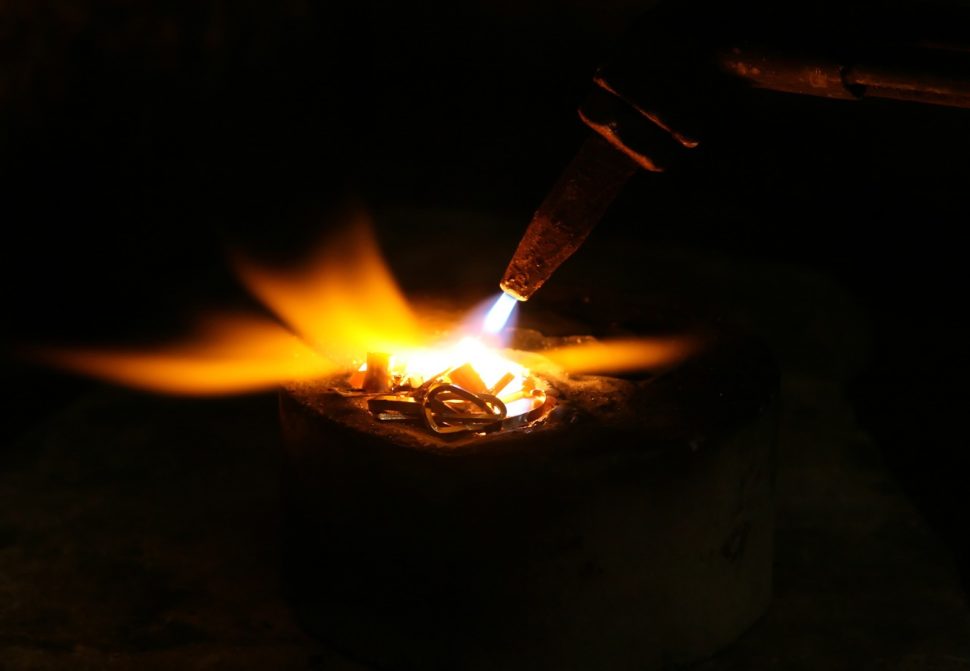Inseparable from metallurgy, the origin of welding goes back for millennia.
The Petit chien à bélière pendent, the earliest example of welding, dates back to the Bronze Age (3300 BCE – 3100 BCE).
Different metal joining processes like welding, soldering, and brazing, were invented in ancient times, but welding as we know it is a 19th-century development.
Despite all the progress, welding is still limited to joining separate pieces of the same material together and applying heat. Current welding techniques can’t address different thermal properties of different materials. And that’s putting a damper on the development of manufacturing processes.
For example, glass would shatter long before metals start expanding. But what if the two materials could fuse together to make a nice weld?
Metal and Glass Can Finally Mesh
Scientists at Heriot-Watt University in Edinburgh, Scotland, announced a welding breakthrough that:
“Could transform the manufacturing sector and have direct applications in the aerospace, defence, optical technology and even healthcare fields.”
Today, the only way to hold metals and glass together is via the use of adhesives, which are not as neat or durable as welding.
But Heriot-Watt researchers have a found a way to bypass this.
The new welding process was developed the EPSRC Centre for Innovative Manufacturing in Laser-based Production Processes based at Heriot-Watt (CIM-Laser).
According to Prof. Duncan Hand, director of CIM-Laser:
“Traditionally it has been very difficult to weld together dissimilar materials like glass and metal due to their different thermal properties… Being able to weld glass and metals together will be a huge step forward in manufacturing and design flexibility,”
Glass and metals are ubiquitous materials that enter into the manufacturing of innumerable products we use in our day to day lives, particularly smartphones.
Read More: The Rise of the E-Waste Crisis
CIM-Laser researchers could get around the thermal material properties challenge thanks to ultrafast laser pulses.
The team used picosecond infrared pulses, which compare to a second like the latter to 30,000 years – that’s about one trillionth of a second, an incredibly short time, though not quite as short as an attosecond.
Professor Hand explained the process:
“The parts to be welded are placed in close contact, and the laser is focused through the optical material to provide a very small and highly intense spot at the interface between the two materials – we achieved megawatt peak power over an area just a few microns across. This creates a microplasma, like a tiny ball of lightning, inside the material, surrounded by a highly-confined melt region.”
Using their laser welding system, the team could successfully weld various optical materials like quartz, borosilicate glass, and sapphire to aluminum, titanium, stainless steel, and other metals.
The welds also held up under temperatures that range from -50°C to 90°C, “so we know they are robust enough to cope with extreme conditions.”



















Awesome Information 🙂